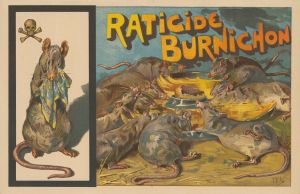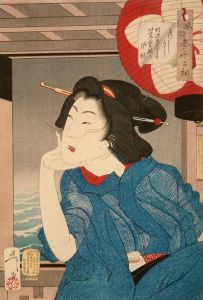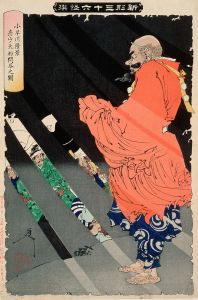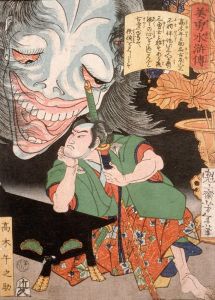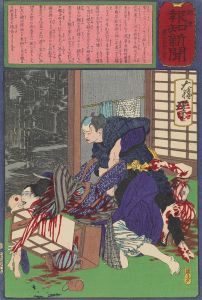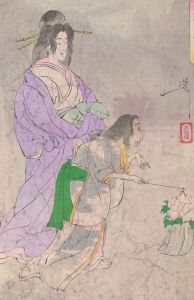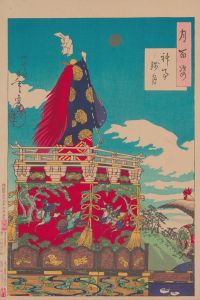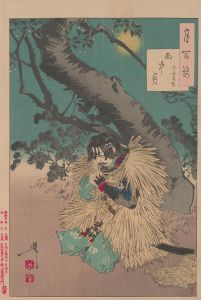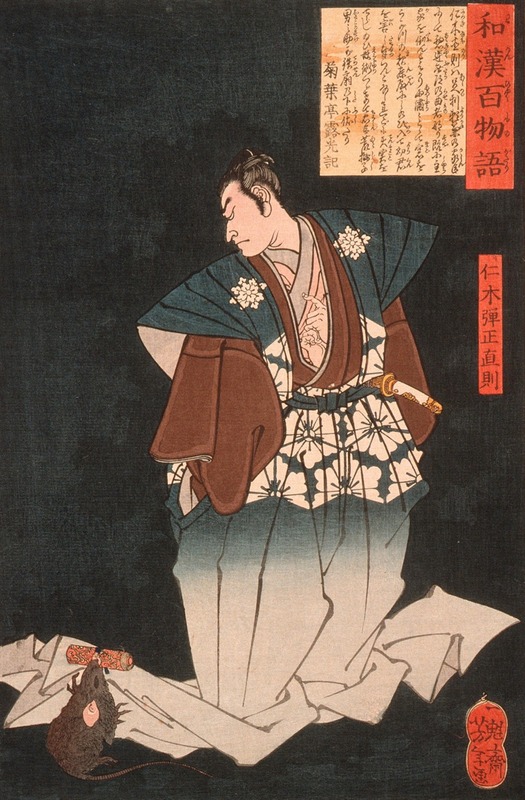
Nikki Danjō Naonori Changing into a Rat
A hand-painted replica of Tsukioka Yoshitoshi’s masterpiece Nikki Danjō Naonori Changing into a Rat, meticulously crafted by professional artists to capture the true essence of the original. Each piece is created with museum-quality canvas and rare mineral pigments, carefully painted by experienced artists with delicate brushstrokes and rich, layered colors to perfectly recreate the texture of the original artwork. Unlike machine-printed reproductions, this hand-painted version brings the painting to life, infused with the artist’s emotions and skill in every stroke. Whether for personal collection or home decoration, it instantly elevates the artistic atmosphere of any space.
"Nikki Danjō Naonori Changing into a Rat" is a woodblock print created by the renowned Japanese artist Tsukioka Yoshitoshi. This artwork is part of Yoshitoshi's series "One Hundred Aspects of the Moon" (Tsuki hyakushi), which was published between 1885 and 1892. The series is celebrated for its intricate designs and the way it captures various scenes from Japanese folklore, history, and literature, all unified by the motif of the moon.
The print depicts a dramatic scene from the kabuki play "Meiboku Sendai Hagi" (The Disputed Succession), which is based on historical events and popular legends. In this particular scene, the character Nikki Danjō Naonori, a villainous retainer, is shown transforming into a rat. This transformation is a pivotal moment in the play, symbolizing Nikki Danjō's cunning and deceitful nature. The story revolves around political intrigue and betrayal within a samurai clan, and Nikki Danjō's transformation into a rat allows him to escape after his nefarious plans are uncovered.
Yoshitoshi's depiction of this scene is notable for its dynamic composition and the expressive detail of the characters. The artist masterfully captures the tension and supernatural elements of the moment. Nikki Danjō is shown mid-transformation, with his human features blending into those of a rat. The background often includes elements that enhance the eerie and mystical atmosphere, such as a moonlit night or shadowy surroundings.
Tsukioka Yoshitoshi (1839-1892) is considered one of the last great masters of the ukiyo-e genre of woodblock printing and painting. His work is characterized by its bold use of color, innovative compositions, and the ability to convey complex emotions and narratives. "One Hundred Aspects of the Moon" is one of his most famous series, and it reflects his deep interest in traditional Japanese themes as well as his ability to adapt and innovate within the ukiyo-e tradition.
The print "Nikki Danjō Naonori Changing into a Rat" exemplifies Yoshitoshi's skill in storytelling through visual art. It combines elements of drama, folklore, and the supernatural, making it a compelling piece within the series. The transformation of Nikki Danjō into a rat is not only a key moment in the kabuki play but also serves as a powerful symbol of his character's treachery and the themes of metamorphosis and escape.
Yoshitoshi's work, including this print, has been highly influential and remains popular among collectors and scholars of Japanese art. His ability to blend traditional subjects with his unique artistic vision has ensured his place as a pivotal figure in the history of Japanese art. "Nikki Danjō Naonori Changing into a Rat" continues to be appreciated for its artistic merit and its rich cultural and historical significance.





